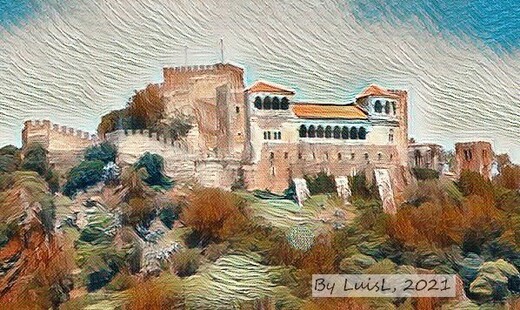
Location - District: Leiria; County: Leiria
Status: classified as National Monument since 1910
Time of existence of the Castle

Background
There is no reliable information about the early human occupation of the castle site, although the region of Leiria is rich in prehistoric and Roman archaeological testimonies.
However, the most recent preventive archaeological work carried out at Leiria Castle as part of the ongoing redevelopment works has shed new light on the occupation of the space. According to information provided by the team of archaeologists involved, in the excavations already carried out evidence of an older occupation was found.
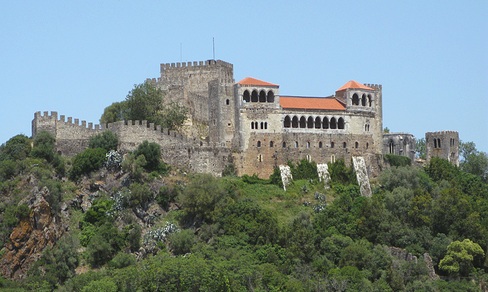
Amongst other finds, a house with painted stucco dating back to the Roman period and parts of a fortification approximately 3000 years old, that is, from the end of the Bronze Age or the beginning of the Iron Age, have seen the light of day.
We know that at the time of the Christian Reconquest of the Iberian Peninsula (in the 12th century), the region was a crucial point for the defence of the southern border of Condado Portucalense.
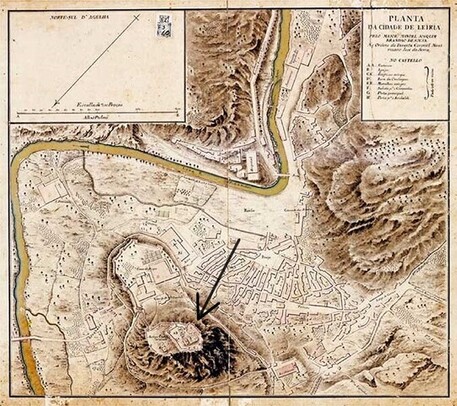
Map of the city of Leiria - by major Manoel Joaquim Brandão de Sousa to the orders of lieutenant-colonel
Maximiano José da Serra. - Scale [1:2000], (1816)
The medieval castle
When he consolidated his government from 1128 onwards, the young King Afonso Henriques (1112-1185), who was only 26 years old at the time, planned to extend his dominions, which were then limited to the north by the river Minho, to the southwest by the Serra da Estrela and to the south by the river Mondego. To this end, from 1130 onwards, he invaded several times the territories neighbouring Galicia to the north, while keeping an eye on the southern border, constantly attacked by the Muslims.
To defend the southern border, he built strategically from scratch a new castle between Coimbra and Santarém in 1135, on top of a rocky hill (at an altitude of about 86 metres) a little south of the confluence of the River Lis and the River Lena.
Its garrison and command was entrusted to D. Paio Guterres, its first alcalde, whose mission was to defend the new frontier that he was trying to establish there. He called the town, which was also beginning to be built and which would be named after the castle, Leiria.
Two years later, the town and its castle were attacked by troops of the Almohad Caliphate, who took advantage of an attack by the forces of Afonso Henriques to the north, in Galicia (1137). After a fierce resistance, Paio Guterres and his men were forced to abandon their positions.
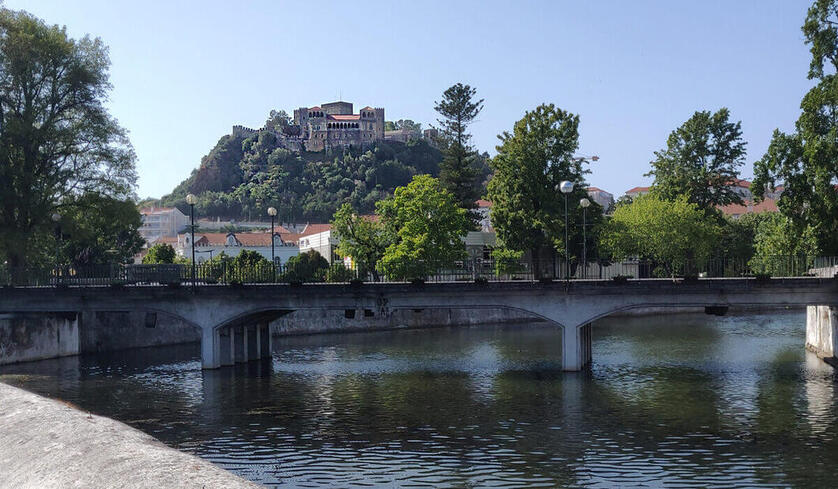
Back in the kingdom, the monarch organised a counter-offensive to contain the advance of the Moors, whose combined forces he defeated in the epic Battle of Ourique (in 1139). At the end of that same year, the Muslims, aware that the Portuguese monarch had embarked on a new campaign against the King of Leon in Galicia, attacked and again conquered Leiria and its castle. This time the defenders suffered heavy losses and their mayor, Paio Guterres, was taken prisoner.
Once again, when D. Afonso Henriques reconquered Leiria Castle (1142), the monarch gave the town a charter, ordering the reconstruction and strengthening of the castle structure, in which he built a chapel in honour of Nossa Senhora da Pena or Santa Maria do Castelo (between 1144 and 1147).
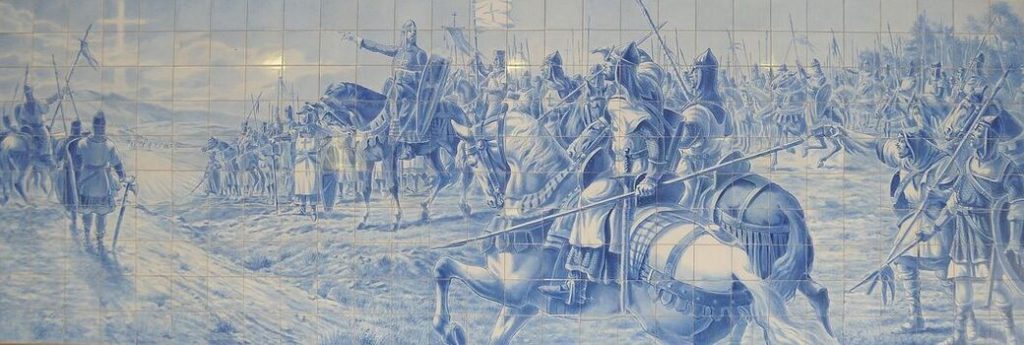
Afonso Henriques in the Ourique Battle by Jorge Colaço (Cultural Centre Rodrigues de Faria, Esposende)
After being lost twice and reconquered twice, the castle of Leiria became a permanent possession of the Condado Portucalense, and was important in the conquest of Santarém and Lisbon and, as such, in the construction and consolidation of the Kingdom.
His successor, D. Sancho I (1185-1211), granted the town a new charter (1195), ordering it to build a walled enclosure. At the time, the town was a prosperous and thriving economic centre, thanks to the trade of cereals and food products (wheat, olive oil, wine, fruit), wood (pine forest of Leiria), ores (iron, coal, rock salt, limestone) and handicraft products (wool and weaving, leather, pottery, ironwork).
The Cortes of Leiria of 1254
In 1254, Afonso III of Portugal (1248-1279) summoned representatives of the clergy, the nobility, and the people to hold the Cortes of Leiria. The Cortes met in the church of São Pedro, within the walls of Leiria Castle.
Other monarchs devoted their attention to Leiria, most notably D. Dinis (1279-1325), who lived there on several occasions, and in 1300 he donated the town and its castle to Queen Santa Isabel, chosen for the rearing of her heir, Prince D. Afonso (at that time the Palace was located in the old seminary).
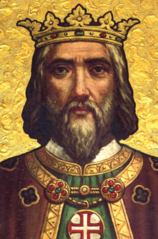
D. Dinis, King of Portugal ( 19th century representation)
Ceiling of the Kings' Hall, Quinta da Regaleira, Sintra
It is to D. Dinis that the adaptation of the castle to the function of a palace, the reconstruction of the chapel of Nossa Senhora da Pena and the beginning of the construction of the powerful dungeon (in 1324) are attributed, a few months before his death. This tower was completed during the reign of his successor, according to an epigraphic inscription on its exterior.
Leiria Castle was one of the first fortifications to raise the coat of arms of Portugal. The coat of arms on the north door has two shields horizontally, which indicates that it was placed in a time before D. João II, because this king ordered that the shields of the coat of arms of Portugal were all vertical.
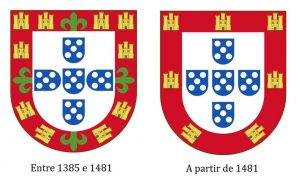
In the early 19th century, and as a result of the Peninsular War, French troops caused extensive damage to the city and its monuments, particularly the Cathedral and Castle. The Castle was left in ruins, thus losing its military value, and was subsequently abandoned. At the end of the 19th century, on the initiative of the League of Friends of the Castle, the architect Ernesto Korrodi drew up a project for the restoration of the Castle ruins (Zurich, 1898).
Leiria's Castle and the 20th Century
Finally, in 1915, the League began the requested restoration works, with its own funds and the assistance of the public authorities, through the Directorate General of Buildings and National Monuments (DGEMN). Under the direction of Ernesto Korrodi, a significant part of the restoration of the Castle was carried out. His work developed until 1934, when he left the project. The works, however, continued in the 1930s, based on his drawings New restoration campaigns were resumed by the DGEMN in the mid-1950s, continuing for the next two decades.
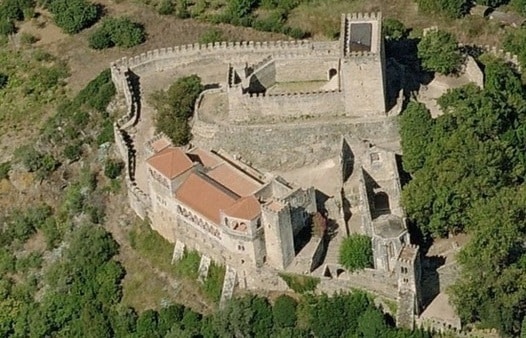
New interventions were carried out in the mid-1980s, continuing through the 1990s, to which is added the requalification intervention started in 2018 and whose works should be completed in this year 2021.
Since 2010, the castle has hosted the summer festival "Entremuralhas/Extramuralhas", a niche musical event that is considered the only gothic rock festival in the world.
The reopening of the monument to the public is scheduled for 2021, and features as a highlight the tower, requalified as a museum space, where archaeological artifacts found on site and medieval armory can be appreciated.
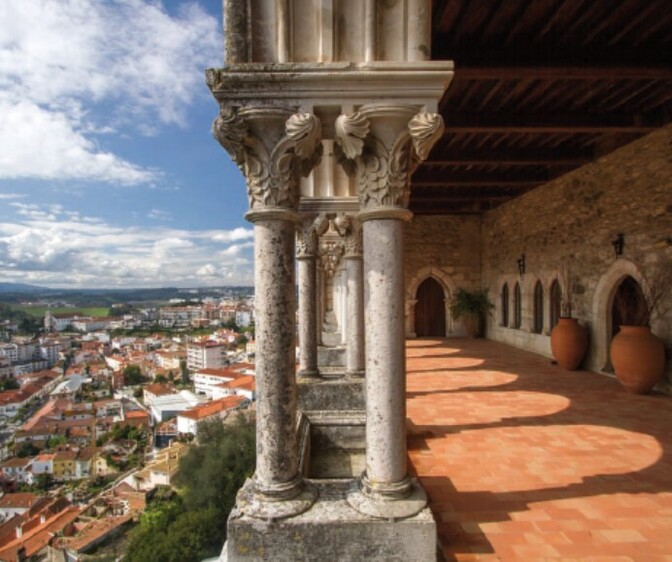
Like it? Then share it!
